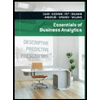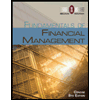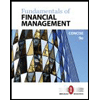d. Plot the Security Market Line. Select the correct graph. The correct graph is 30(%) 20 10- A. -0.5 -10- -20- Security Market Line 0.5 1.5 2 2.5 3.5 30(%) Security Market Line 20- 10- B. -0.5 -10- D. -20- Beta 0.5 1 1.5 2 2.5 3.5 Beta 30(%) Security Market Line 20 10 -0.5 -10- -20 0.5 1 1.5 2 2.5 3.5 Beta 30(%) 20- Security Market Line 10- -0.5 -10 -20- 0.5 1.5 2 2.5 3.5 Beta e. Suppose you hold a large, well-diversified portfolio and are considering adding to that portfolio either Stock X or another stock, Stock Y, which has the same beta as Stock X but a higher standard deviation of returns. Stocks X and Y have the same expected returns: Fx fy = 10.6%. Which stock should you choose? You are given the following set of data: HISTORICAL RATES OF RETURN Year NYSE Stock X 1 - 26.5% - 22.0% 2 37.2 15.0 3 23.8 10.0 4 - 7.2 4.0 5 6.6 11.8 6 9 20.5 30.6 18.9 17.6 The data has been collected in the Microsoft Excel Online file below. Open the spreadsheet and perform the required analysis to answer the questions below. X Open spreadsheet a. Use a spreadsheet (or a calculator with a linear regression function) to determine Stock X's beta coefficient. Do not round intermediate calculations. Round your answer to two decimal places. Beta = b. Determine the arithmetic average rates of return for Stock X and the NYSE over the period given. Calculate the standard deviations of returns for both Stock X and the NYSE. Do not round intermediate calculations. Round your answers to two decimal places. NYSE Stock X Average return,π Avg % % Standard deviation, σ % % c. Assume that the situation during Years 1 to 7 is expected to prevail in the future (i.e., x = TX, Average ↑ M = TM, Average, and both σx and by in the future will equal their past values). Also assume that Stock X is in equilibrium - that is, it plots on the Security Market Line. What is the risk-free rate? Do not round intermediate calculations. Round your answer to two decimal places. % d. Plot the Security Market Line.
d. Plot the Security Market Line. Select the correct graph. The correct graph is 30(%) 20 10- A. -0.5 -10- -20- Security Market Line 0.5 1.5 2 2.5 3.5 30(%) Security Market Line 20- 10- B. -0.5 -10- D. -20- Beta 0.5 1 1.5 2 2.5 3.5 Beta 30(%) Security Market Line 20 10 -0.5 -10- -20 0.5 1 1.5 2 2.5 3.5 Beta 30(%) 20- Security Market Line 10- -0.5 -10 -20- 0.5 1.5 2 2.5 3.5 Beta e. Suppose you hold a large, well-diversified portfolio and are considering adding to that portfolio either Stock X or another stock, Stock Y, which has the same beta as Stock X but a higher standard deviation of returns. Stocks X and Y have the same expected returns: Fx fy = 10.6%. Which stock should you choose? You are given the following set of data: HISTORICAL RATES OF RETURN Year NYSE Stock X 1 - 26.5% - 22.0% 2 37.2 15.0 3 23.8 10.0 4 - 7.2 4.0 5 6.6 11.8 6 9 20.5 30.6 18.9 17.6 The data has been collected in the Microsoft Excel Online file below. Open the spreadsheet and perform the required analysis to answer the questions below. X Open spreadsheet a. Use a spreadsheet (or a calculator with a linear regression function) to determine Stock X's beta coefficient. Do not round intermediate calculations. Round your answer to two decimal places. Beta = b. Determine the arithmetic average rates of return for Stock X and the NYSE over the period given. Calculate the standard deviations of returns for both Stock X and the NYSE. Do not round intermediate calculations. Round your answers to two decimal places. NYSE Stock X Average return,π Avg % % Standard deviation, σ % % c. Assume that the situation during Years 1 to 7 is expected to prevail in the future (i.e., x = TX, Average ↑ M = TM, Average, and both σx and by in the future will equal their past values). Also assume that Stock X is in equilibrium - that is, it plots on the Security Market Line. What is the risk-free rate? Do not round intermediate calculations. Round your answer to two decimal places. % d. Plot the Security Market Line.
Excel Applications for Accounting Principles
4th Edition
ISBN:9781111581565
Author:Gaylord N. Smith
Publisher:Gaylord N. Smith
Chapter15: Ratio Analysis (ratioa)
Section: Chapter Questions
Problem 2R: The comparative financial statements of Global Technology are as follows: Open the file RATIOA from...
Related questions
Question

Transcribed Image Text:d. Plot the Security Market Line.
Select the correct graph.
The correct graph is
30(%)
20
10-
A.
-0.5
-10-
-20-
Security Market Line
0.5
1.5
2
2.5
3.5
30(%)
Security Market Line
20-
10-
B.
-0.5
-10-
D.
-20-
Beta
0.5
1
1.5
2
2.5
3.5
Beta
30(%)
Security Market Line
20
10
-0.5
-10-
-20
0.5
1
1.5
2
2.5
3.5
Beta
30(%)
20-
Security Market Line
10-
-0.5
-10
-20-
0.5
1.5
2
2.5
3.5
Beta
e. Suppose you hold a large, well-diversified portfolio and are considering adding to that portfolio either Stock X or another stock,
Stock Y, which has the same beta as Stock X but a higher standard deviation of returns. Stocks X and Y have the same expected
returns:
Fx
fy
= 10.6%. Which stock should you choose?

Transcribed Image Text:You are given the following set of data:
HISTORICAL RATES OF RETURN
Year
NYSE
Stock X
1
- 26.5%
- 22.0%
2
37.2
15.0
3
23.8
10.0
4
- 7.2
4.0
5
6.6
11.8
6 9
20.5
30.6
18.9
17.6
The data has been collected in the Microsoft Excel Online file below. Open the spreadsheet and perform the
required analysis to answer the questions below.
X
Open spreadsheet
a. Use a spreadsheet (or a calculator with a linear regression function) to determine Stock X's beta
coefficient. Do not round intermediate calculations. Round your answer to two decimal places.
Beta =
b. Determine the arithmetic average rates of return for Stock X and the NYSE over the period given.
Calculate the standard deviations of returns for both Stock X and the NYSE. Do not round intermediate
calculations. Round your answers to two decimal places.
NYSE
Stock X
Average return,π Avg
%
%
Standard deviation, σ
%
%
c. Assume that the situation during Years 1 to 7 is expected to prevail in the future (i.e.,
x = TX, Average
↑ M
= TM, Average, and both σx and by in the future will equal their past values). Also assume that Stock
X is in equilibrium - that is, it plots on the Security Market Line. What is the risk-free rate? Do not round
intermediate calculations. Round your answer to two decimal places.
%
d. Plot the Security Market Line.
Expert Solution
This question has been solved!
Explore an expertly crafted, step-by-step solution for a thorough understanding of key concepts.
Step by step
Solved in 2 steps with 8 images

Recommended textbooks for you

Excel Applications for Accounting Principles
Accounting
ISBN:
9781111581565
Author:
Gaylord N. Smith
Publisher:
Cengage Learning

Essentials Of Business Analytics
Statistics
ISBN:
9781285187273
Author:
Camm, Jeff.
Publisher:
Cengage Learning,

College Accounting, Chapters 1-27
Accounting
ISBN:
9781337794756
Author:
HEINTZ, James A.
Publisher:
Cengage Learning,

Excel Applications for Accounting Principles
Accounting
ISBN:
9781111581565
Author:
Gaylord N. Smith
Publisher:
Cengage Learning

Essentials Of Business Analytics
Statistics
ISBN:
9781285187273
Author:
Camm, Jeff.
Publisher:
Cengage Learning,

College Accounting, Chapters 1-27
Accounting
ISBN:
9781337794756
Author:
HEINTZ, James A.
Publisher:
Cengage Learning,

Fundamentals of Financial Management, Concise Edi…
Finance
ISBN:
9781285065137
Author:
Eugene F. Brigham, Joel F. Houston
Publisher:
Cengage Learning

Fundamentals of Financial Management, Concise Edi…
Finance
ISBN:
9781305635937
Author:
Eugene F. Brigham, Joel F. Houston
Publisher:
Cengage Learning